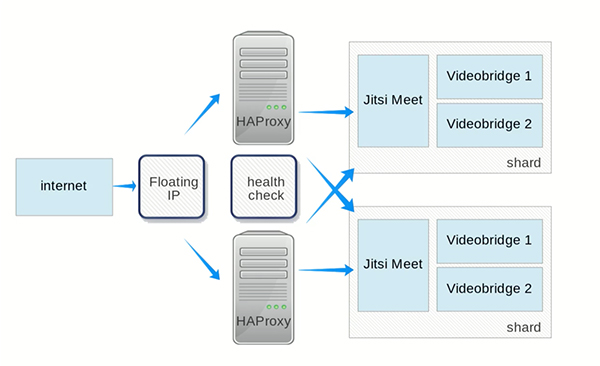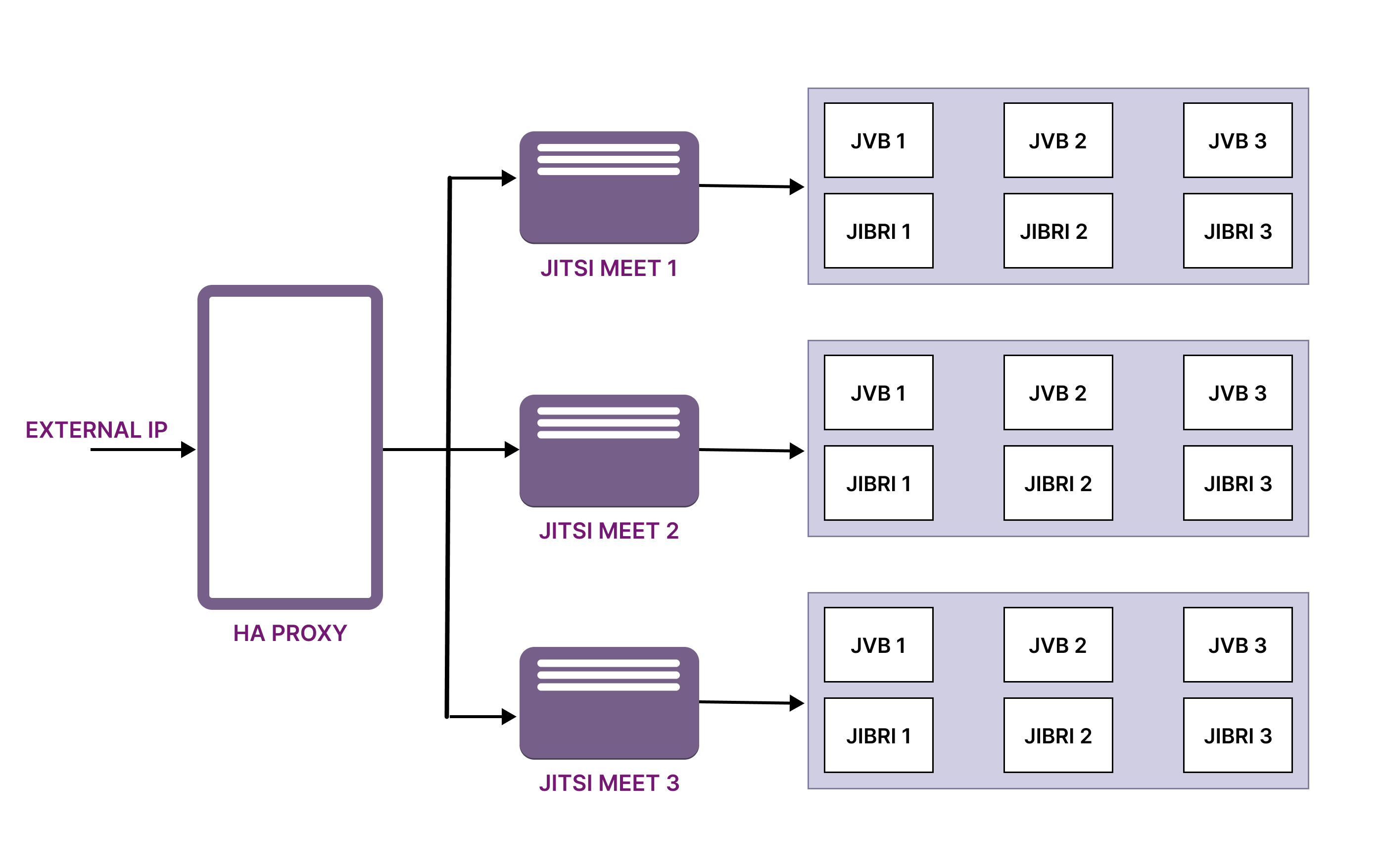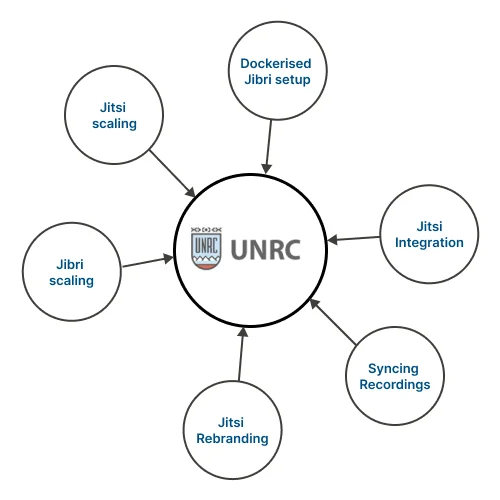Have a large number of users? Don't worry, we can assist you in establishing a scalable architecture for Jitsi.

When the traffic in the server increases and the server resources
max out, we would need more servers to meet the demand. If the
volume of traffic remains constant, we can easily add more servers
to meet the demand. However, if the volume of traffic changes
frequently, a workable solution must be found. An autoscaling
solution must be used in this situation, in which the servers are
spun up or down based on the traffic volume.
Key
Components needed in Autoscaling:

A single shard with a single Jitsi Meet, multiple Jibri, and JVB will be generated.

Numerous shards will be present, each with multiple jitsi Meet and Multiple Jibri and JVB.
Let's explore on how we helped our clients
UNRC wanted to use Jitsi for their online classes. While installing jitsi is an easy task, scaling it to handle large number of users is a different scenario. Keeping in mind the scenario of 10K+ concurrent student, we scaled the jitsi accordingly. We helped them with following jitsi services:
See MoreWhile everyone was shifting virtually, our valuable client got an idea to develop a virtual event platform. We used jitsi for 121 networking, group networking, sponsor networking with along with other live streaming tools. We helped them with following jitsi services:
See MoreJitsi Scaling aims to accommodate growing demand by dynamically adjusting resources, ensuring optimal performance for an increasing number of concurrent conferences.
Consider Jitsi Scaling if you experience increased conference demand, encounter performance issues, or aim to optimize resource usage for cost efficiency.
Jitsi Autoscaling dynamically creates secondary servers based on CPU consumption, optimizing costs while ensuring optimal performance to meet demand.
Auto-scaling dynamically adjusts resources based on usage, optimizing your Jitsi setup for efficiency and responsiveness during peak demands.
Focus on your business growth and leave development and configuration to us.

